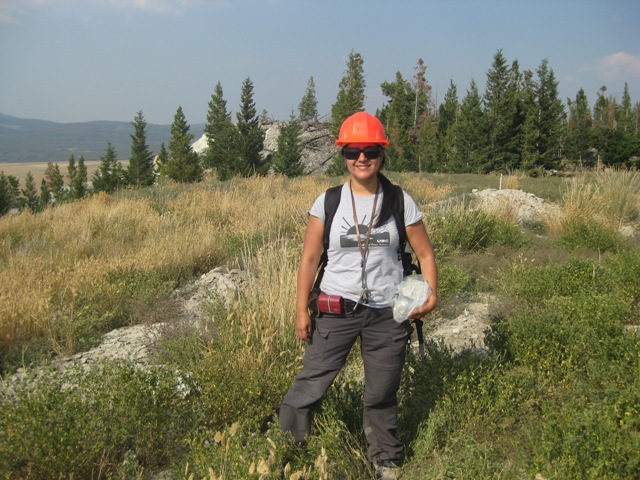Biography:
I finished my 5 year undergraduate program in 1999 with honours and received a Bachelor’s degree at the “Universidad Nacional de Ingenieria” in Lima-Perú. I worked part time with Newmont since 1998 and I continued working for that company for 4 years. In 2000, I got my degree as Geological Engineer in the same university after completing a thesis called “Geology and Exploration in the Abra deposit Lima-Ancash”, this Project was sponsored by Newmont. I continued as a junior geologist doing exploration in Peru and Nicaragua for Newmont until 2002 when I decided to improve my English language skills at the Mount St College- Los Angeles — USA. In 2003, back in Peru I started working as a mine geologist at the Antamina Mine a world class skarn deposit for two years. From 2005 to the end of 2007 I lived in Chile and worked for Mintec doing consulting work and technical support for Minesight, a mining software package with capabilities to generate 3D geologic models. However my inclination for economic geology and my ambition to continue studying led me to decide pursuing a postgraduate degree at MDRU, UBC since September 2008.
Project:
Located in the southern interior of British Columiba, the Highland Valley porphyry copper-molybdenum district (HVPD) represents an excellent opportunity to examine the range of white mica and chlorite compositions associated with large scale magmatic hydrothermal alteration affecting host rocks of limited compositional variability. The deposits are hosted in the Triassic calc-alkaline Guichon Creek batholith (McMillan, 1985; Casselman et al.,1995). The HVPD is a cluster of six porphyry copper-molybdenum deposits from which Bethlehem, Valley and Alwin are the areas of interest herein and represent approximately 10km of cross section of the central area of the HVPD.
Although porphyry deposits are a common topic of investigation, there is little information about mineral chemical variations in alteration minerals within a porphyry Cu deposits. Two minerals, white mica and chlorite can provide invaluable information about the physicochemical conditions in which they formed. Moreover, they are common hosts for a range of trace elements, whose ranges in concentration are directly associated with the evolution of a hydrothermal fluid. The abundance of white mica in porphyry deposits such as Highland Valley, and their formation throughout the duration of the system make them a potential tool to constrain the spatial evolution of the magmatic hydrothermal system. Similarly, chlorite is also a common alteration product of fluid-rock interaction (Walshe, 1986) and it is distributed in different amounts throughout the deposit as well. At a regional scale, Highland Valley is suitable to study the lateral fluid-flow gradients as reflected in the white mica and chlorite compositional variations. These data will also permit some constraints to be placed on the fluid characteristics.
During the first year of the study, a general zoning was established from more paragonitic mica in the Valley pit in the center of the district to phengitic mica near the periphery. The variation of chemical composition of these micas have been demonstrated on the basis of electron microprobe, SEM and Short wave infrared spectroscopy (SWIR). However, to fully understand the implications of these minerals, trace element analysis using modern technology, that is LA-ICPMS analysis, is necessary to better constrain the trace element zonation and fluid processes envolved, the latest is part of the second year of work. The utltimate goal of applying a combination of all these analytical methodologies is to expand the alteration footprint for porphyry Cu deposits and establish exploration vectors. These results are expected to aid exploration for porphyries in British Columbia and elsewhere.
